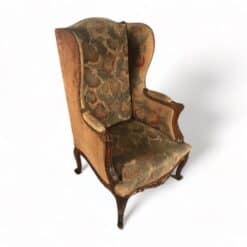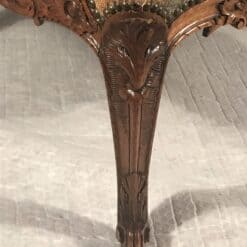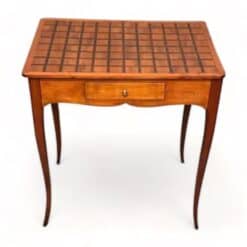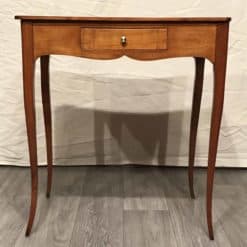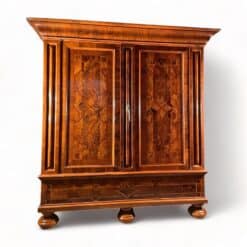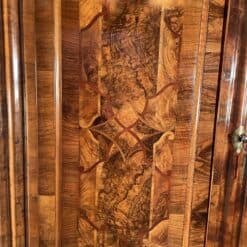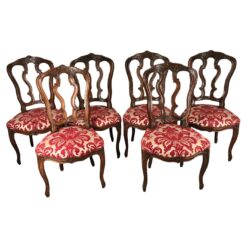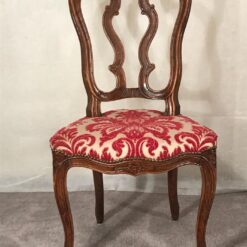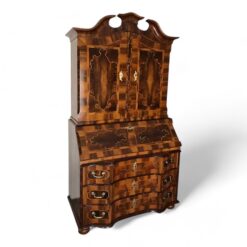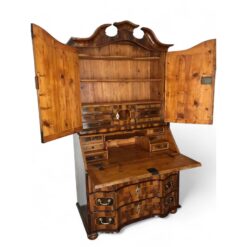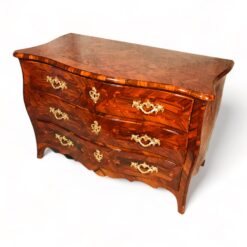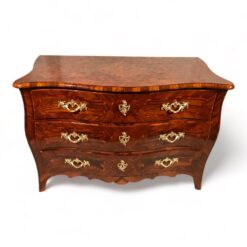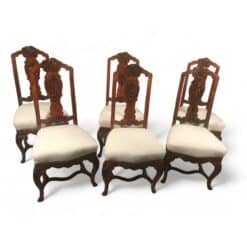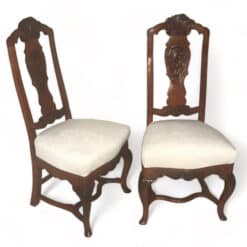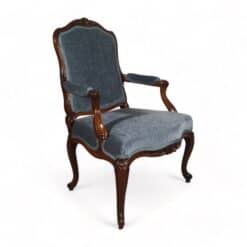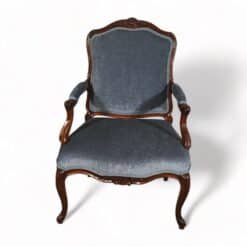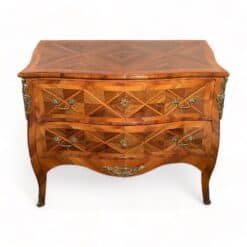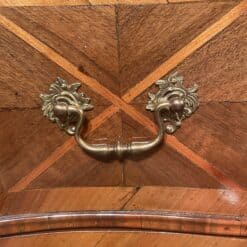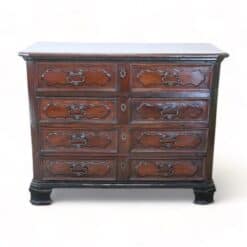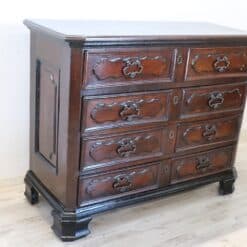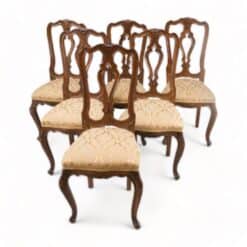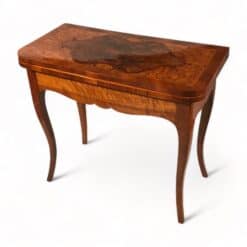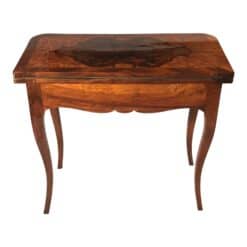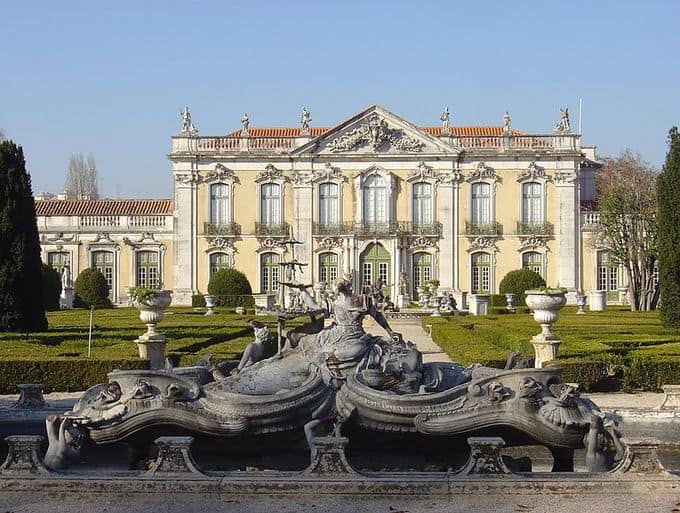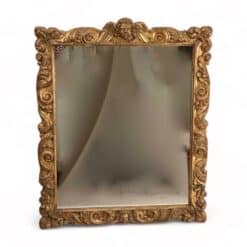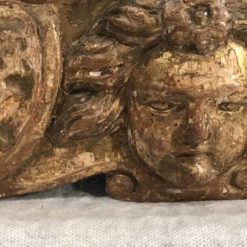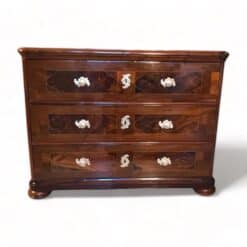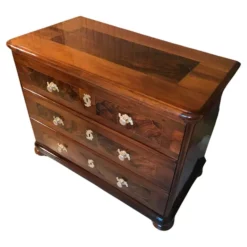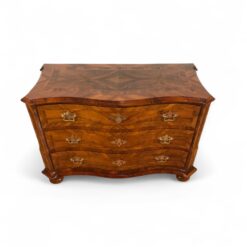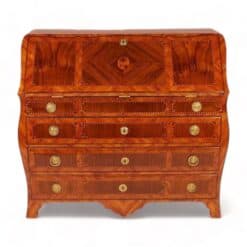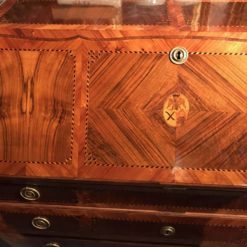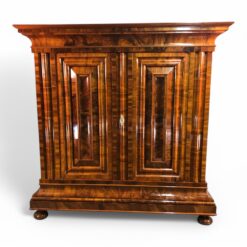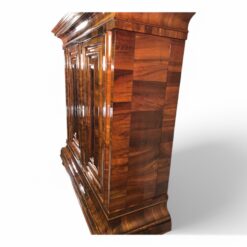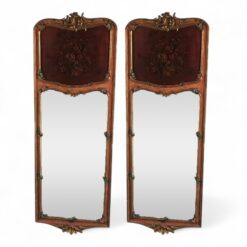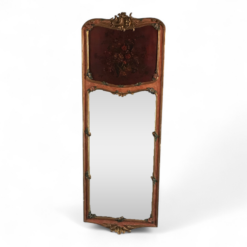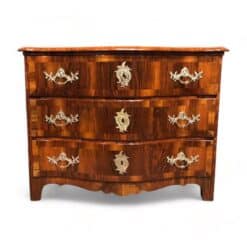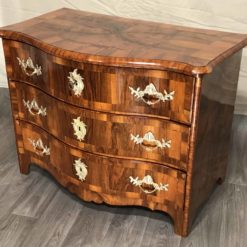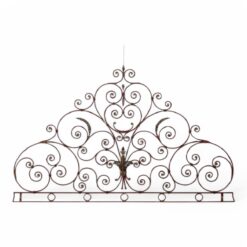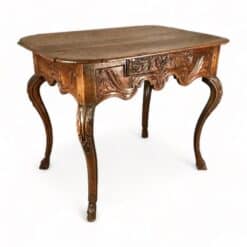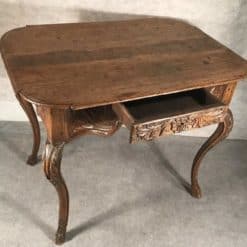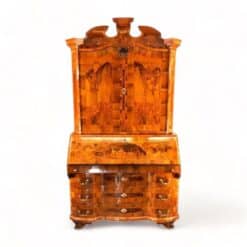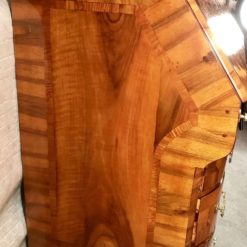Best Sellers
Style, Styylish History
The Birth of Extravagance: The Baroque Style in Focus
Few periods of antique styles leave as much of an imprint on the present day as Baroque style. A period of color, detail, and grandeur, the Baroque appeared in every corner of art in the 17th century: from architecture, painting, and sculpture to music and dance.
At Styylish, we feature furniture in the late Baroque style from the early and mid 18th century. In order to understand the origins of those pieces, and how their uniquely shapely elegance evolved, we want to take a look at the Baroque period in general, particularly in Germany.
To learn more about the evolution of styles in the 18th and 19th century, be sure to check out our blog post on the history of antique desks. The Biedermeier style of 19th century Germany, which we covered extensively in a blog post from a few weeks ago, in many ways evolved as a reaction to the Baroque style in general.
If you are craving a touch of the modern, learn more about the digital art in our catalogue here.
Origins of the Baroque Style
The term Baroque likely stems from the Medieval Latin baroco, a technical term that connotates complexity, excess, and magic. The term itself is as complex as the style it denotes. Baroque style is full of new discoveries, re-discoveries, and contradictions.
The Baroque style evolved from conflict. The Protestant reformation of the 16th century had split European Christianity down the middle. The Protestants favored simplicity and austerity over Gothic grandeur. Rather than acquiesce to that notion, the Catholic Church funded a revival of the grandiose. That is the essence of Baroque style and the work of baroque artists.
It should come as no surprise, then, that Baroque primarily evolved in and around the clergy in all European countries. Churches were sites of Baroque renewals in architecture, painting, and the decorative arts.
Architecture: The Glory of God
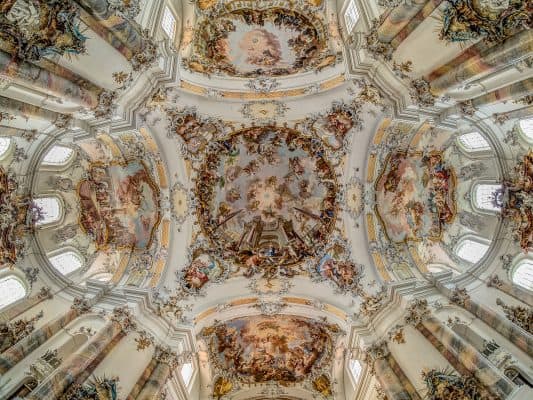
Like the larger Renaissance, Baroque began in Italy. New grandiose styles erupted in and around the churches of the Catholic Church, which was based in Vatican City in Rome then, as it is now.
Most notably, the cupola became a glorious mainstay in the design of larger, more spacious church buildings. They were lofty domes, full of light, lavishly decorated by contracted painters.
Cupolas had been part of Italian redesign since the early Renaissance and the days of Michelangelo in the 15th and 16th century, but they gained new relevance in the Baroque period. In general, the goal of Baroque style was to make the churches as awe-inspiring as possible.
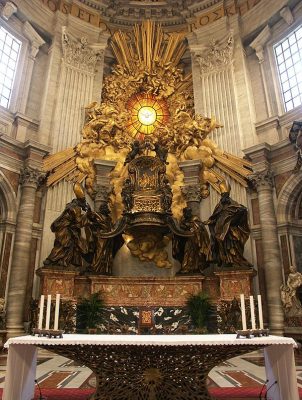
The façade of St. Peter’s Basilica in Rome, for instance, is a Baroque redesign that sought to make the heart of Catholicism more imposing.
Elaborate golden altarpieces were also frequent additions to Baroque church spaces. In Italy and Spain especially, altars were sites of extreme splendor. Both the splendid ceilings and cupolas, and the altarpieces sought to glorify the connection between heaven and earth.
Painting: The Devil in the Details
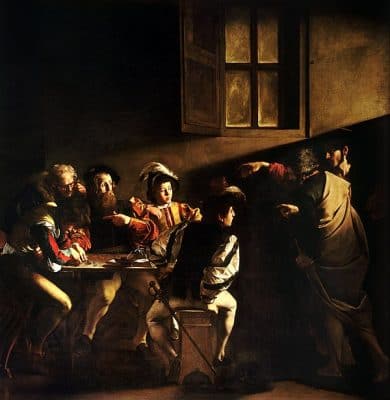
Painters of the Baroque style did not only paint church ceilings. A revolution in detail and style accompanied the Renaissance, and affected both Italian painters like Caravaggio, and Northern masters like Peter Paul Rubens, Rembrandt, and Vermeer.
The Baroque style in painting emphasized the realism of the human figure. It moved away from the technical intellectualism of Renaissance painting. Baroque painting saw the beginnings of emotional art which would later grow more intense during 19th century Romanticism.
Working with the established styles that grew out of the Renaissance allowed Baroque painters to delve more daringly into dramatics, religious fervor, and emotional range. The result is a period of ravishingly theatrical painting that lives up to baroco: complex, excessive, and magical.
Music: Innovating Opera

The most notable development of the Baroque style in music was the growth of opera as an art form. Just as in painting, music became more theatrical, dramatic, innovative, and emotional. The development of classic ballet, in its theatrical elegance, went hand in hand with the development of Baroque music.
Antonio Vivaldi and Johann Sebastian Bach are both Baroque composers, whose deeply emotional themes built upon the technical mastery of their antecedents.
Furniture: Grand Décor
In furniture, too, craftsmen found a flair for the dramatic in Baroque style. As a direct antecedent to the even more lavish rococo style that followed after, in the mid-18th century, Baroque furniture embraced exuberant detail and grandiose accoutrements.
Baskets of fruits and flowers, seashells, heads, volutes, and armaments all made their way into furniture design. From the feet to the surfaces of tables, commodes, and closets, decoration became a core feature of furnishings.
The Low Countries dominated the early decades of Baroque furniture. England and Germany took the lead in the 18th century. Germany especially was at the forefront of this artisan movement and continued to exert great influence on later decorative art movements.
Major Furniture Centers in Baroque Germany
The Holy Roman Empire was composed of a plethora of kingdoms, duchies, and enclaves. They were various in size, history, religion, and culture. Before the unification of Germany in the late 19th century, German culture was as diverse as the many entities that defined it.
It comes as no surprise, then, that major cities all had their own unique furniture makers. With so much diversity on small territory, the cultural competition between artisans from different polities was great and inspired.
The result was a massive variety of Baroque furniture erupting out of Germany in the early 18th century. Particularly the cities of Munich and Dresden were home to some of the most skilled artisans of the baroque décor.
Examples of Late Baroque Furniture
The Baroque style is one of our absolute favorite periods of furniture design at Styylish. Our catalogue of Baroque furniture focuses on late in the period and features a variety of pieces showcasing the Baroque philosophy.
This Baroque Walnut Dresser from 1750, for instance, delights with its exquisite wood details. From curved design of the drawers, to lavish bronze fittings and escutcheons, this piece makes a jaw-dropping addition to any room.
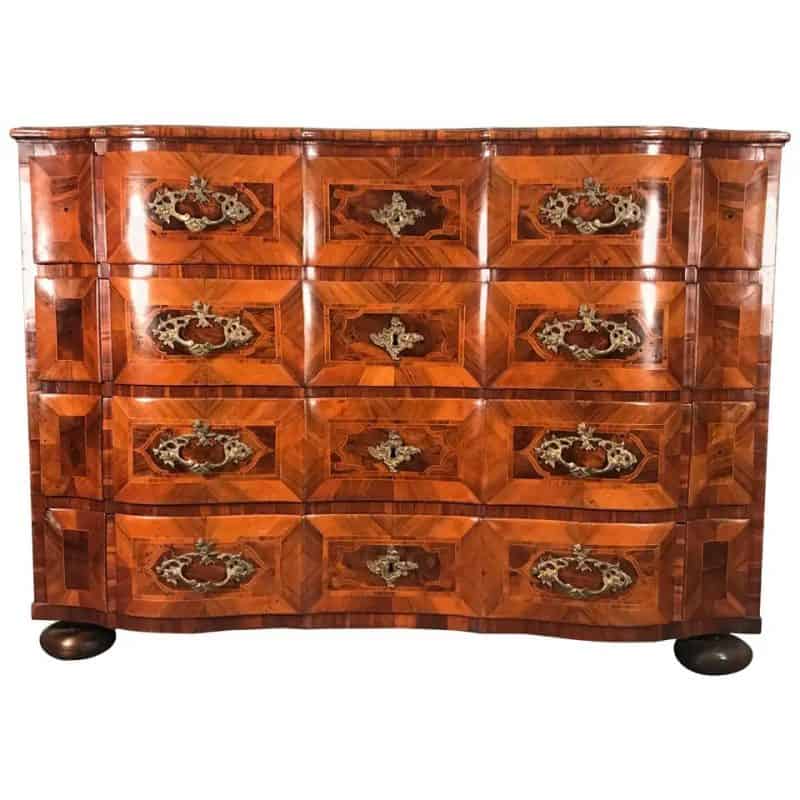
Then there is this real jewel of a Baroque cabinet, complete with a secretary desk. An imposing, warm presence for your living room, office, or even dining room, thishttps://styylish.com/product/18th-century-baroque-cabinet-with-secretaire/ piece astounds with playful wood details in the paneling, and a regal crown-shape at the top.
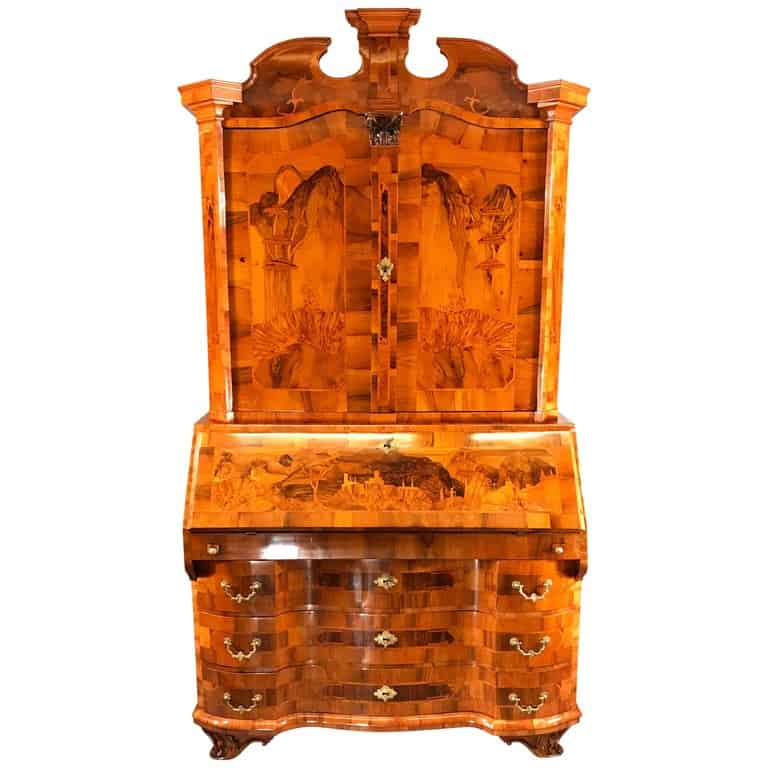
But even something as refined as this Baroque table, complete with gorgeous spiraling legs and dramatic scenes in the wood paneling, can lift an entire room into a new stratosphere of refinement.
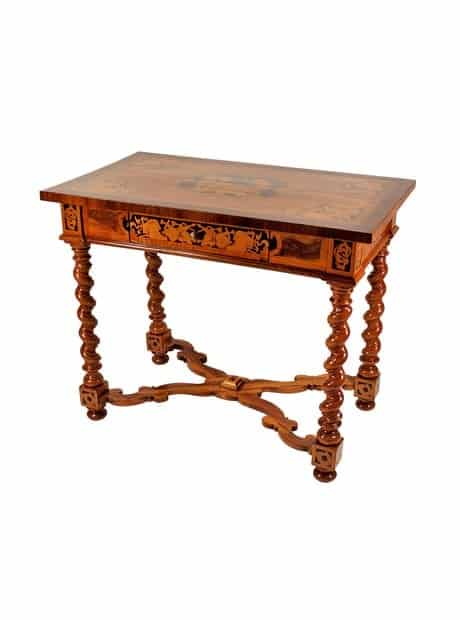
A Period of Possibilities
The Baroque style affected all aspects of visual and performing arts in 17th and 18th century Europe. With its dramatic disposition and focus on exuberant detail, it is certainly one of the most pleasant art periods to behold.
Do not hesitate to browse the Styylish store for your own slice of brave grandiosity!

